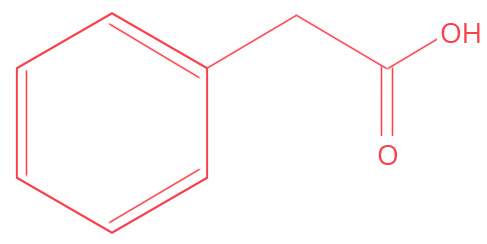Phenylacetic Acid

Phenylacetic acid is an organic compound containing a phenyl functional group and a carboxylic acid functional group. It is a white solid with a disagreeable odor. Because it is used in the production of phenylacetone (used in the manufacture of substituted amphetamines), it is subject to controls in some countries.
With the assistance of phenylacetic acid, adult and pediatric patients with deficiencies in the enzymes of the urea cycle are treated for acute hyperammonemia and encephalopathy.
Naturally occurring in various types of fruits and other plants, phenylacetic acid is used as an additive for flavoring as well as as a perfume. Its uses include the treatment of hyperammonemia for patients suffering from urea cycle deficiencies, and as a side chain precursor in the production of penicillin G. It also has a role in the manufacturing of Camylofin, Bendazol, and Triafungin.
Properties of Phenylacetic Acid
- Molecular formula: C8H8O2
- CAS No.: 103-82-2
- The molecular weight of Phenylacetic Acid is 136.15 g/mol.
- The melting point of Phenylacetic Acid is 76°-78°C
- White crystalline solid
- Assay: Not Less Than 99% By G.C
Applications of Phenylacetic Acid
- Phenylacetic acid is an excellent fixative agent and it can be directly used in soap, as a cosmetics essences
- Phenylacetic Acid is used in perfumes
- It is used in the production of several pharmaceuticals.
- This compound is used to treat urea cycle disorder.
